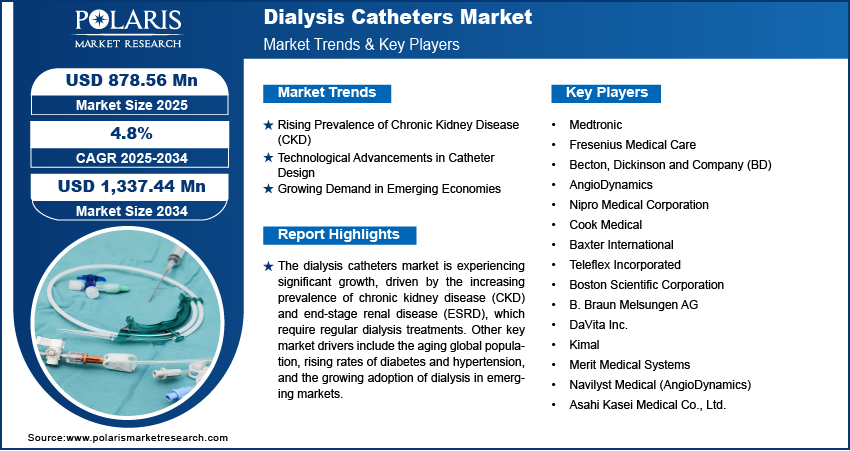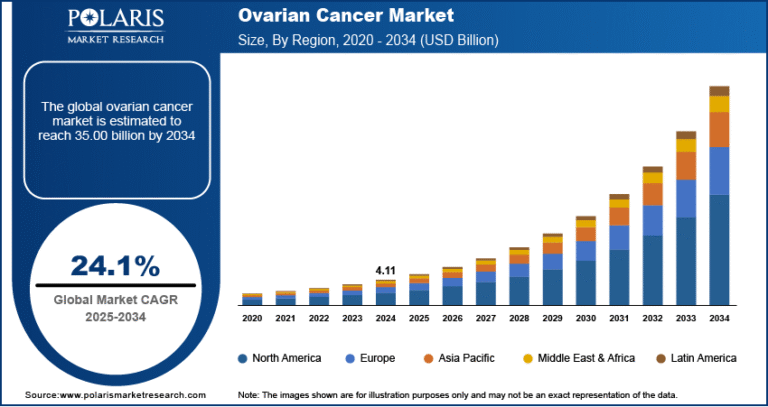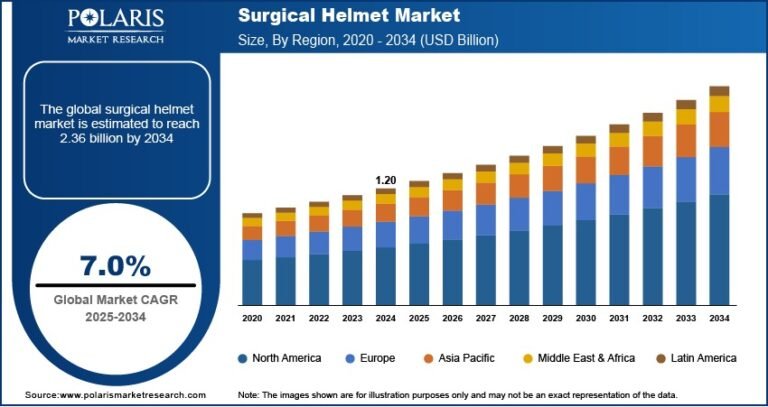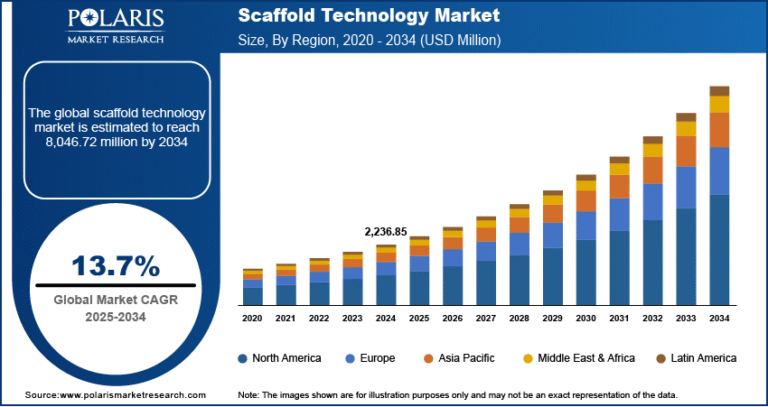Dialysis Catheters Market Projected to Reach USD 1,337.44 Million by 2034, Growing at a CAGR of 4.8%

Market Overview
The dialysis catheters market plays a crucial role in managing patients with chronic kidney disease (CKD) and end-stage renal disease (ESRD). Dialysis catheters are essential for providing vascular access in hemodialysis and peritoneal dialysis procedures. These devices are widely used in hospitals, dialysis centers, and increasingly in homecare settings due to the growing demand for convenient and efficient treatment options. As the incidence of kidney-related disorders rises globally, the demand for dialysis catheters is expected to grow steadily in the coming years.
The global dialysis catheters market was valued at approximately USD 840.08 million in 2024 and is projected to reach around USD 1,337.4 million by 2034, growing at a compound annual growth rate (CAGR) of 4.8% during the forecast period. The market growth is supported by technological advancements in catheter design, a rising aging population, and a growing preference for home-based dialysis treatment.
Trends & Insights
-
Rising Preference for Home Dialysis: With healthcare systems encouraging home-based dialysis to reduce hospital visits and costs, there is an increasing demand for user-friendly and long-lasting dialysis catheters.
-
Advancements in Catheter Materials: Manufacturers are developing catheters using advanced materials such as polyurethane and silicone that offer improved biocompatibility, durability, and reduced risk of infection.
-
Minimally Invasive Technologies: New catheter designs are being developed to facilitate minimally invasive insertion procedures, enhancing patient comfort and reducing complications.
-
Focus on Infection Prevention: The development of catheters with antimicrobial coatings is gaining traction as healthcare providers seek to reduce catheter-related bloodstream infections.
Market Size & Forecast
Market size value in 2025 USD – 878.56 million
Revenue forecast in 2034 USD – 1,337.44 million
CAGR – 4.8% from 2025 – 2034
Request for Free Sample: https://www.polarismarketresearch.com/industry-analysis/dialysis-catheters-market/request-for-sample
Key Market Growth Drivers
-
Increasing Incidence of Chronic Kidney Disease: The global rise in CKD and ESRD cases, driven by conditions such as diabetes and hypertension, is a major driver for dialysis catheter demand.
-
Aging Population: Older adults are more likely to suffer from kidney-related disorders, and their increasing numbers are contributing to the growth of the dialysis market.
-
Technological Innovations: Continuous improvements in catheter design, such as tunneled and non-tunneled versions, and enhanced tip designs are improving treatment outcomes and patient safety.
-
Government Support for Home Dialysis: Many governments and healthcare organizations are promoting home dialysis programs, creating additional demand for safe and efficient catheter devices suitable for self-use.
Market Challenges
-
Risk of Infections: Catheter-related infections remain a major challenge in the market, prompting the need for advanced preventive technologies.
-
High Cost of Treatment: Dialysis procedures, along with the cost of specialized catheters, can be expensive, particularly in developing countries with limited healthcare budgets.
-
Regulatory Hurdles: Gaining approval for new catheter technologies requires rigorous testing and compliance with strict regulatory standards, which can delay product launches.
-
Lack of Skilled Professionals: The insertion and management of dialysis catheters require specialized training. A shortage of skilled healthcare personnel can limit the adoption of advanced catheter systems, particularly in rural and underserved regions.
In conclusion, the dialysis catheters market is positioned for steady growth driven by the increasing need for renal care and advancements in catheter technology. Addressing challenges related to infection control, cost, and training will be crucial to support broader adoption and improved patient outcomes globally.






